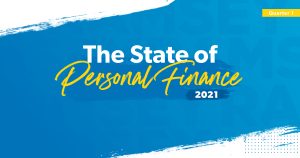Richard Drury/ Getty Images; Illustration by Austin Courregé/Bankrate
The cost of tapping into your home’s value just got (slightly) more expensive. The $30,000 HELOC (home equity line of credit) increased two basis points to 8.70 percent in the most recent week, while the average $30,000 home equity loan rose 6 basis points to 8.41 percent, according to Bankrate’s national survey of lenders.
Despite this week’s rise, Stephanie Kizy, managing partner and lending advisor at Pro Mortgage Funding, believes that home equity rates will resume their downward trajectory over the next few months. “It’s possible they (HELOC rates) could drop another 0.5 percent to 1 percent in the next year, “ she says. “But I don’t anticipate them going back to what they were before, which was in the 3s and 4s.”
| Current | 4 weeks ago | One year ago | 52-week average | 52-week low | |
|---|---|---|---|---|---|
| HELOC | 8.70% | 8.73% | 10.04% | 9.31% | 8.68% |
| 15-year home equity loan | 8.42% | 8.37% | 9.13% | 8.77% | 8.37% |
| 10-year home equity loan | 8.50% | 8.46% | 9.09% | 8.79% | 8.46% |
| Note: The home equity rates in this survey assume a line or loan amount of $30,000. | |||||
What’s driving home equity rates today?
After hovering around 9 percent for more than a year, HELoan and HELOC rates have been gradually moving lower in 2024 — and the pace quickened with the onset of autumn. Their moves are currently being driven by two factors: lender competition — as banks and mortgage companies try to attract applicants with low-for-a-limited-time loan terms — and the Federal Reserve’s actions. At the September Federal Reserve meeting, the central bank cut rates by half a point. The next Fed rates announcement is scheduled for Nov. 7.
“HELOC rates will continue to come down more or less in step with Fed rate cuts,” says Greg McBride, chief financial analyst at Bankrate. “HELOC rates will be sensitive to declining interest rates and borrowers will see rates steadily moving lower, even faster than fixed-rate home equity loans. HELOC rates could fall faster than credit card rates, particularly if competition brings about introductory offers and if credit card issuers are skittish about delinquencies and slower to pass along lower rates.”
Home equity trends
What influences home equity loan rates?
Several factors can influence rates on home equity loans and HELOCs.
Chief among them: changes to the Federal Reserve’s monetary policy. New home equity loans and HELOCs are tied to the prime rate, which tends to move alongside the benchmark interest rate that the Fed adjusts. As a result, when the Fed raises rates, borrowing costs on equity-based loans tend to go up. And the opposite happens when it lowers rates.
The Fed’s moves influence the general direction of interest rates not just for home equity loans, but also for consumer loans and financing in general. However, because they use your home as collateral, HELOCs and HELoan rates tend to be more akin to current mortgage rates — and much less expensive than the interest charged by credit cards and personal loans, which aren’t secured.
Comparing consumer loan rates
The Fed’s monetary policy influences interest rate trends overall and advertised rates you see. However, the individualized offer you receive from a lender on a particular HELOC or new HELoan reflects an additional factor: your creditworthiness — specifically your credit score, debt-to-income ratio, and the value of the home you’re putting up as collateral.
Read the full article here










